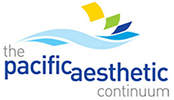
Gary Vaughn, CDT, CTO
The invention of the laser occurred around about 1960. Since that time a myriad of laser technology applications have surfaced, so diverse that it would be near impossible to name them all. Laser systems in dentistry have advanced rapidly enabling the practitioner the ability to remove caries, prep tooth structure, reshape gum tissue, remove bacteria, biopsy or lesion removal, teeth whitening, and more.
How many of you have ever painstakingly tried in a case with everything seating well and looking good but when you proceed to bond it in place before you notice, you’ve tacked it in place only to find it wasn’t seated completely? You can’t get it off and end up having to cut it off…or do you??
Obviously, it’s bad enough if this case is only a single unit case, but imagine, (or remember that time when) you went to seat a 10-unit smile design case? When you tried it in, the contacts were perfect, and the contours lined up forming an ideal arch form. It looked great, but then when you tacked it in place somehow one of the central incisors got twisted just slightly and now you can’t get it off! The anticipation of the patient walking out of your office with a beautiful, completely, brand new smile is suddenly postponed. In fact, the final result may even possibly be jeopardized because now the ceramist needs to completely redo the one unit that had to be cut off and pray that they can match it to the other nine units perfectly.
A number of years ago, I remember coming across a Youtube video of Dr. David Hornbrook successfully removing a poorly placed bonded unit by using a laser. I was incredulous as I watched it over and over. It appeared to be a miracle. However, the setting on the laser and the time administered were critical. If anything was off, you risked overheating the tooth, resulting in possible irreversible damage or even the eventual loss of the tooth.
Now, moving forward a few years, I thought I would share a recent discovery with you. As fate would have it, about two months ago, the aforementioned scenario played itself out anew and I was faced with redoing a central incisor, right in the middle of a 10-unit smile design case that had been tacked in place slightly out of the correct position. Unable to retrieve the veneer, it had to be cut off and reimpressed. Ironically, within the next week or so, I had a consultation with a patient in another office that had recently had eight upper crowns placed. Initially, she was extremely pleased, however after closer scrutiny concluded she was not thoroughly pleased with #10 and wondered what we could do about it. The doctor and our laboratory were both determined to do what was needed to resolve the issue. When I told the doctor we would need to cut off the crown, he told me that rather than cutting it off, he would first try removing it with his laser. He shared with me that he had successfully removed quite a few restorations intact with his laser.
Perhaps there are many lasers on the market capable of this task, but I have recently found one that I know will work. Fotona Laser company (https://www.fotona.com/us/), which has been in operation since 1964, manufactured an Erbium Laser that, with the proper setting utilized and waved back and forth over the restoration, will literally debond the crown from tooth structure. Please note it is strongly encouraged that you do not use any suction devise with this procedure because it works so well, the veneer will literally be drawn right off the prep. Also, be prepared for the restoration to literally fly off the tooth. The secret, I am told is that the Erbium is a cold laser and its beam is attracted to water. It will literally absorb the water so rapidly that, on a microscopic level, it will vaporize the water, freeing up the bonding material from the tooth structure. I have been told that it works for all-ceramic restorations from e.max to Feldspathic to Zirconium. Please also note that there is no guarantee that the crown or veneer will always come off in one piece. Thin veneers that have been in the mouth for an extended period of time or have been adjusted in the mouth, having potentially absorbed fluids, are less likely to release in one piece.
But if the only other alternative for removal is cutting it off, the utilization of a laser is certainly worth a try, saving the doctor, patient and laboratory considerable time and hassle. Another plus is that once removed, the laser can be directed inside the crown to completely remove all the old bonding material, enabling one to load the crown with cement and reseat it to the prep.
Another added benefit of purchasing a laser from Fotona is that you have immediate access to a forum on Facebook shared by like-minded clinicians who are always finding a new application for this valuable technology.
If you have questions about this article, would like to contact a representative from Fotona, or if you would like to send a case, please contact the Pacific Aesthetic Laboratory Group at www.pacificaestheticdentalstudio.com, Gary Vaughn, CDT, CTO (916) 786-6740, or via email [email protected].
